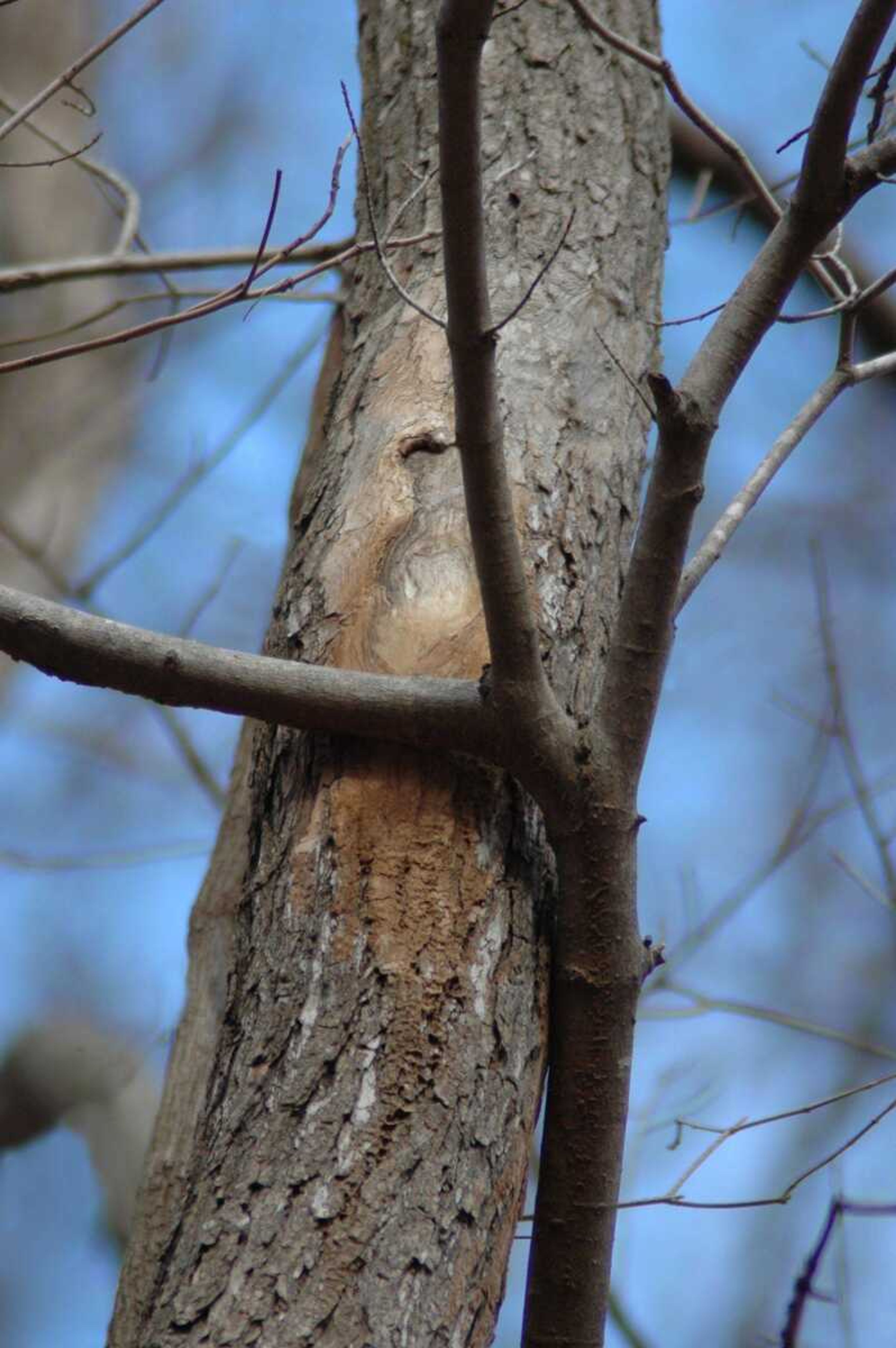How an animal den begins
Have you ever been out walking in a wooded area on a windy day and heard a strange sound coming from the trees? Did you wonder what kind of animal might be making the sound? Pictured here is the effect of what you might have heard. The larger tree in my photo is a sassafras with a trunk about 12 inches in diameter. It is a stable, sturdy tree. The limb of a hard maple tree has been rubbing against the sassafras trunk each time the wind blows...
Have you ever been out walking in a wooded area on a windy day and heard a strange sound coming from the trees? Did you wonder what kind of animal might be making the sound? Pictured here is the effect of what you might have heard.
The larger tree in my photo is a sassafras with a trunk about 12 inches in diameter. It is a stable, sturdy tree. The limb of a hard maple tree has been rubbing against the sassafras trunk each time the wind blows.
It is evident here that the bark of the sassafras tree has been worn through, exposing the heart wood beneath. Years may pass before decisive change comes to the sassafras, but with a scar this large and with continual wear, the tree could become a den for animals or birds.
Insects are likely to attack the exposed wood causing rot to set in. Woodpeckers are likely to chip away at the rotting wood in search of wood-boring grubs and beetles. Eventually this sassafras tree could become a "den tree" in which squirrels, owls, wood ducks or even raccoons may live and raise their young. And it all started because two trees were vying for the same space in the woods.
This could be considered as a form of wind erosion. Without the wind moving the limb, the two trees quite likely would grow into each other, becoming attached. When this happens the phenomenon is known as "kissing trees."
@body_no_indent italics:Through the Woods is a weekly nature photo column by Aaron Horrell. Find this column at semissourian.com to order a reprint of the photo. Find more work by him at the O'Tenem Gallery.
Connect with the Southeast Missourian Newsroom:
For corrections to this story or other insights for the editor, click here. To submit a letter to the editor, click here. To learn about the Southeast Missourian’s AI Policy, click here.











